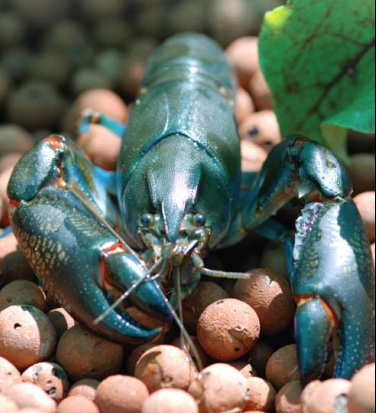
This fish is quickly becoming one of the most popular eating fish in the US because of it’s mild taste and firm, porous texture which readily absorbs the flavors around it. It also happens to be the easiest fish to grow in an Aquaponic system (especially for beginners). The Tilapia is a tropical fish whose native home is Africa and the Nile River Basin in lower Egypt. They are perhaps the oldest farmed fish on the planet as there are documented accounts of them having been farmed as far back as ancient Egypt. One of the oldest accounts of Tilapia farming is a bas-relief that was found in a 4,000 year old Egyptian tomb showing Tilapia held in ponds. The Tilapia was such an important food source for the Egyptians that it has it’s own hieroglyph (see above). Currently, they are the most popular fish of Aquaponic farmers; and many Tilapia species are being farmed. The Nile Tilapia and the Mozambique are two of the favored species because they grow very fast while refraining from breeding until they are older. Due to this prolific farming of Tilapia, several hybrid species have been created as well. It’s full pouty lips, (many women have paid a pretty penny for lips like this) are the doorway of the nursery for a mother Tilapia who scoops up the fertilized eggs she laid in the nest built by the male and carries them in her mouth for 4-8 days. She continues to carry the newly hatched baby fish called “fry” for another 3-5 days. At this point the fry hang out in schools all rushing back to the safety of these prominent lips when danger approaches. As a Tilapia grower, you are gifted with the beauty of observing this natural cycle right in your Tank as adult female Tilapia spawn every 4-6 weeks.
The Fish Talapia
Tilapia are tough fish--not to chew--in that regard, they’re as soft as butter. Rather, they’re rugged, resistant to disease and parasites and can tolerate lots of beginner learning-curve issues. They can handle a wide range of water quality and temperature challenges; and they can survive longer in a toxic water environment with low oxygen and/or high ammonia levels. Tilapia thrive in water temperatures between 60-80 degrees F preferring the 80 degree end of the scale; but they are usually raised in temperatures between 72-74 degrees F to better serve the plants. They are also easy to breed; and they grow to maturity faster than most other cultured fish. In the best of environments, a Tilapia can grow to 2.5 lbs. in seven months. That’s the up-side.
Here’s the down-side. Because they’re so easy to breed and spawn every 4-6 weeks, your system can quickly become overrun with the little schooling frys creating a negative impact on the ability of the more mature fish to grow. So you have to get a handle on breeding early and have a second tank available for your frys. Selling the frys can be a lucrative business in itself as they can be difficult to get in some areas. Tilapia are omnivores. They eat both plants and organic materials. Although they do not eat other fish, their resilience and hardiness makes them dominant in the waterway; and they soon crowd out the native fish. This explains why the Tilapia has been outlawed in some communities. If you are considering culturing Tilapia, you need to check your local ordinances before doing so
Here’s the down-side. Because they’re so easy to breed and spawn every 4-6 weeks, your system can quickly become overrun with the little schooling frys creating a negative impact on the ability of the more mature fish to grow. So you have to get a handle on breeding early and have a second tank available for your frys. Selling the frys can be a lucrative business in itself as they can be difficult to get in some areas. Tilapia are omnivores. They eat both plants and organic materials. Although they do not eat other fish, their resilience and hardiness makes them dominant in the waterway; and they soon crowd out the native fish. This explains why the Tilapia has been outlawed in some communities. If you are considering culturing Tilapia, you need to check your local ordinances before doing so
Why Grow Talapia
If you can’t or don’t wish to grow Tilapia, there are several other species of fish that you can culture including Trout, Largemouth Bass, Blue Gill, Catfish, Koi and Goldfish. In Australia where Aquaponics is more well known, they are growing fish that are native to that continent. They include Barramundi, Jade Perch, Silver Perch and Murray Cod. Here are some of the pros and cons that come with culturing these fish.
.What Other Types of Fish Can I Grow
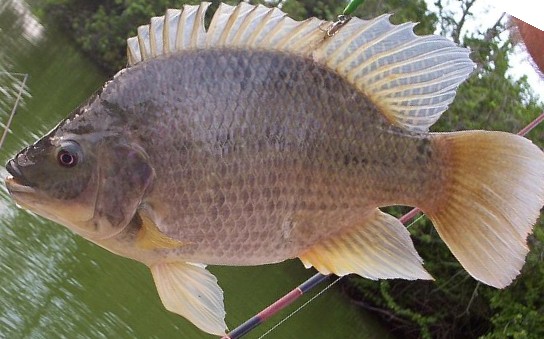
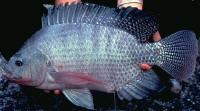
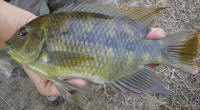
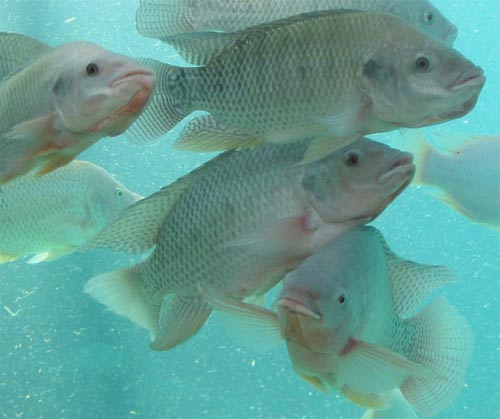
This fish is much less tolerant to unfavorable water conditions than the Tilapia. It can be successfully grown in an Aquaponic system, but it requires a vigilant and patient grower to do so because it takes between 16-17 months to produce a table-ready fish and a lot can go wrong. They do not do well with less than delicate handling. Nor do they like bright light and cannot tolerate poor nutrition. They are one of the most sensitive fish to raise; and their water temperature and oxygen levels need to be monitored daily. The young fingerlings need to be trained to feed on pellets.
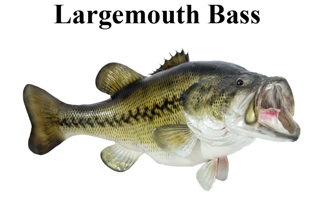
The trout is another temperamental fish to grow in an Aquaponic system. It’s very different from the Tilapia in that it’s a cold water fish and likes water temperatures that are much cooler than the tropical 70-75 degrees F of a Tilapia tank. Some growers who reside in colder climates, especially in the winter, will grow Trout during those months. But the cold water makes the selection of plants more limited as many plants prefer the more tropical water temperatures. Trout need pristine water conditions
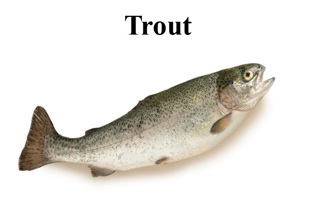
The catfish is a hardy fish that is resistant to both disease and parasites when living in quality-controlled water. But if oxygen and ammonia levels aren’t properly maintained, they will have difficulties. Like Tilapia, Catfish thrive in warm water and prefer a temperature of 80 degrees F. They are bottom dwellers, meaning they occupy only the bottom portion of the tank making for a low density fish crop if you raise them alone. Therefore, many farmers raise them with Blue Gill who use the upper portion of the tank and thrive in the same tropical conditions.
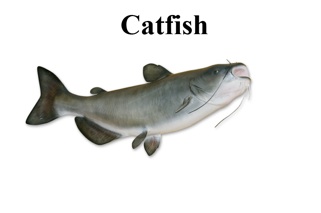
Barramundi are often grown in aquaponic systems through the warmer months of the year. Most growers will buy fairly mature stock so that they can harvest larger fish, at the end of the growing season. Barramundi that is grown in an aquaponic system has an exceptionally clean, crisp taste. Growing your own Barramundi excites guests and is the envy of neighbours. They provide a decent harvest at the end of the season and are one of the more majestic species of edible fish.

Silver perch are a good allround native Australian fish that grow well under a variety of conditions. Perch are omnivorous and will happily eat green scraps as well as Duckweed and Azolla. They grow within a wide temperature range, though they're not as fast growing as many other fish, taking 12-18 months for fingerlings to grow to plate size.
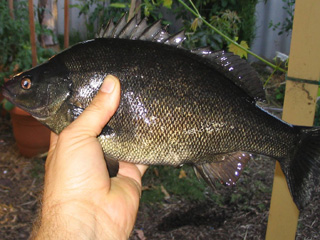
Other aquatic animals that can be incorporated into an aquaponic system are fresh water mussles, fresh water prawns, and fresh water crayfish. Mussles are a filter-feeder, and do a great job of helping to clean the water, they will happily grow in flooded grow beds, or can be incorporated into fish tanks. Crustaceans make a nice addition to an aquaponic system and there are a few different species available depending on your location and water temperatures.
For those in tropical areas there's Redclaw, a fast growing native Australian species, and for those in cooler areas there's Yabbies or Marron.
Yabbies breed readily, given the right environment and the correct water temperature, as well as long daylight hours. They also grow fairly quickly, but they can be prone to fighting and cannibalism when stocked very densely. The Yabby is also a attractive crustacean as seen from this picture to the left.
For those in tropical areas there's Redclaw, a fast growing native Australian species, and for those in cooler areas there's Yabbies or Marron.
Yabbies breed readily, given the right environment and the correct water temperature, as well as long daylight hours. They also grow fairly quickly, but they can be prone to fighting and cannibalism when stocked very densely. The Yabby is also a attractive crustacean as seen from this picture to the left.
